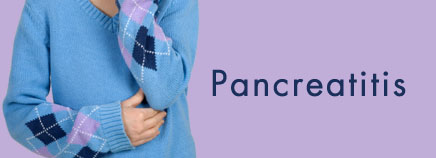
It’s a familiar scene: Your child wakes up in the middle of the night feeling feverish, nauseated, and complaining of a stomach ache. Then come the tears, the vomiting, and the inability to keep fluids down. Usually, these symptoms add up to nothing more than a 24-hour stomach bug.
But sometimes there’s a different cause. The symptoms of pancreatitis (an inflammation of the pancreas) can sometimes appear as a stomach virus.
Pancreatitis usually goes away quickly, with no permanent damage to the pancreas. But it’s important to recognize the symptoms early to lessen the risk of complications. A child may need treatment or dietary changes for a short while.
About Pancreatitis
Pancreatitis is an inflammation of the pancreas, a large gland behind the stomach that produces digestive juices, or enzymes, that help break down food in the upper portion of the duodenum (small intestine). The pancreas also is responsible for producing insulin and glucagon, two hormones that help control levels of blood sugar, the body’s main energy source.
When the pancreas is working normally, the enzymes it secretes do not become active until they reach the duodenum. But when the pancreas is inflamed, the enzymes become activated early on (while still in the pancreas) and begin attacking internal structures. Tissues within the pancreas that produce enzymes are damaged, failing to produce new enzymes. Over time, this tissue damage can become permanent.
Types of Pancreatitis
Pancreatitis can be acute (lasting for a few days) or chronic (recurring). Acute pancreatitis develops suddenly, while chronic pancreatitis develops gradually and keeps coming back. Though rare in children, chronic pancreatitis is usually inherited.
Kids usually get the acute form of the condition, which can develop idiopathically (with no known cause) or in response to a viral infection or medication. Acute pancreatitis can result from traumatic injury to the abdomen, cystic fibrosis, or from excess fat in the blood (hyperlipidemia).
Pancreatitis or a Stomach Bug?
The main difference between pancreatitis and a stomach virus or other digestive system illness is the severity of abdominal pain. Kids with acute pancreatitis will have severe pain in the upper abdomen that makes it difficult for them to stand or sit upright, and they’ll probably sit or lie in the fetal position to get more comfortable. After the first 2 days, the pain usually intensifies.
Other signs include:
- persistent vomiting, which increases after the first 2 days of illness
- loss of appetite
- when able to eat, inability to keep food down
- vomit that is yellowish, greenish, or brownish
- jaundice (yellow discoloration of the skin)
- fever
- in some cases, back pain or left shoulder pain
Short-term symptoms can include dehydration and low blood pressure.
Diagnosis
If a doctor suspects pancreatitis, the first step is to perform blood tests, like an amylase test or lipase test, to see whether the enzymes made by the pancreas are at normal working levels. If they are elevated, the doctor might order an abdominal ultrasound to check for inflammation, blockages, or stones in the pancreatic duct that leads to the first part of the duodenum, and other abnormalities.
In some cases, the doctor may order an abdominal computed tomography scan (CT) scan, which uses X-rays and computer technology to produce detailed images of the body’s internal organs, to help confirm a diagnosis of pancreatitis.
During the initial visit, the doctor might ask you to describe the color and type of your child’s vomit. If it contains a great deal of bile (greenish digestive juices from the liver), the doctor might want to further assess your child for pancreas or liver problems.
Treatment
In most cases, pancreatitis gets better on its own. Sometimes, the doctor will recommend putting your child on a low-fat diet with plenty of fluids. This is less likely to irritate the pancreas and helps it to heal faster.
Kids with a more severe case of pancreatitis who become dehydrated may need a short stay in the hospital. Treatment involves resting the pancreas by not eating or drinking, and receiving intravenous (IV) fluids and pain medication. Other medications may help to reduce the amount of acid in the body. For some kids, this is enough and they can go home after a few days of treatment.
Other kids might need additional treatment with special IV fluids called total parenteral nutrition (TPN). TPN treatment bypasses the normal digestive process to provide the necessary nutrients of salt, glucose, amino acids, lipids, and vitamins.
Another approach is the placement of a soft plastic feeding tube called a naso-jejunal (NJ) tube. This tube is guided through the nose and ends up in the small intestine, where it delivers nutrition without stimulating the pancreas. Local anesthesia is used for this procedure, so a child will experience only slight discomfort.
Once home, most kids are placed on a low-fat diet to help heal the pancreas, which they should follow until their enzyme levels are back to normal. A follow-up blood test will probably be done to confirm normal enzyme levels.
Outlook
Fortunately, most kids who develop pancreatitis get over it quickly — in as little as 4 or 5 days — with few or no complications.
In the unlikely case that a child develops a recurrence or complications such as cysts, bleeding, infection, or persistent pain, additional tests or surgery might be needed to rule out other conditions.

